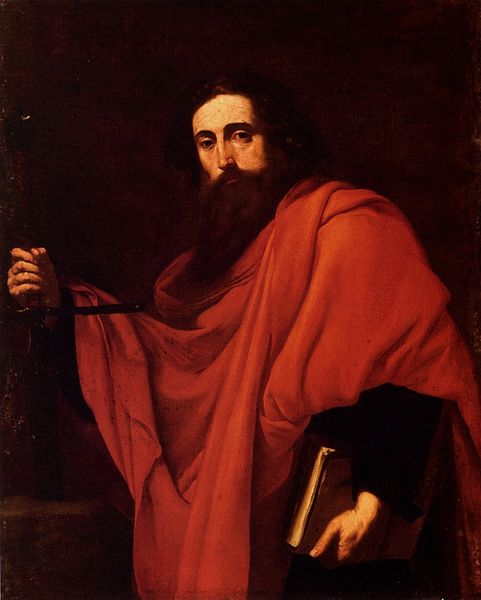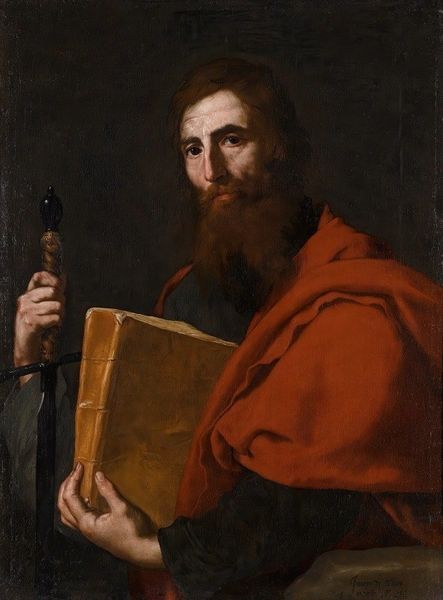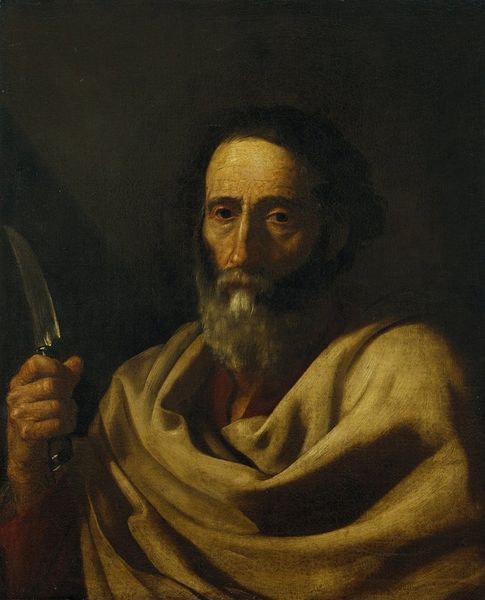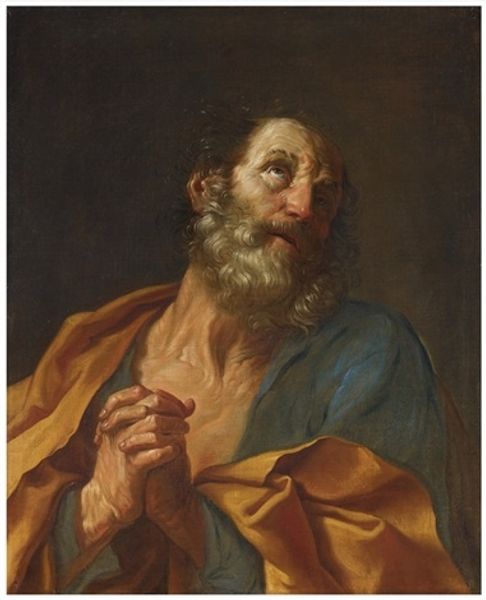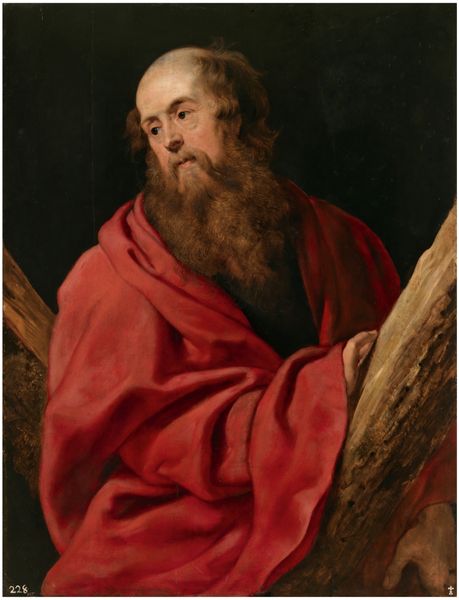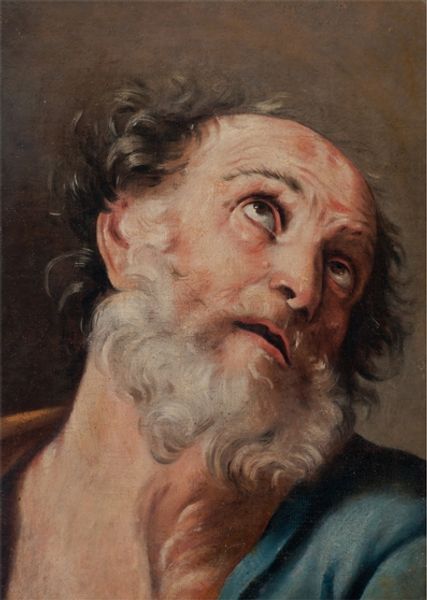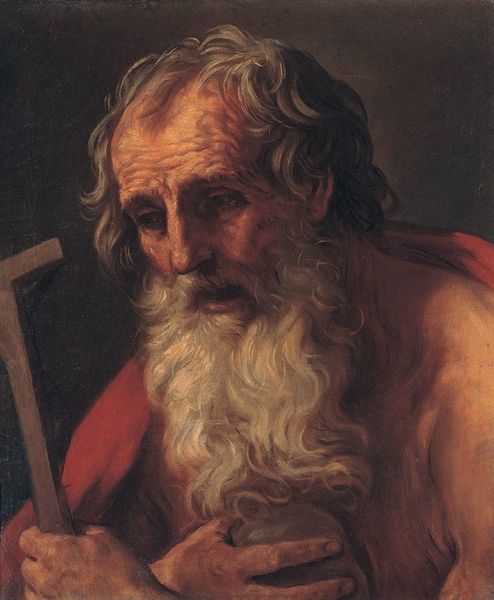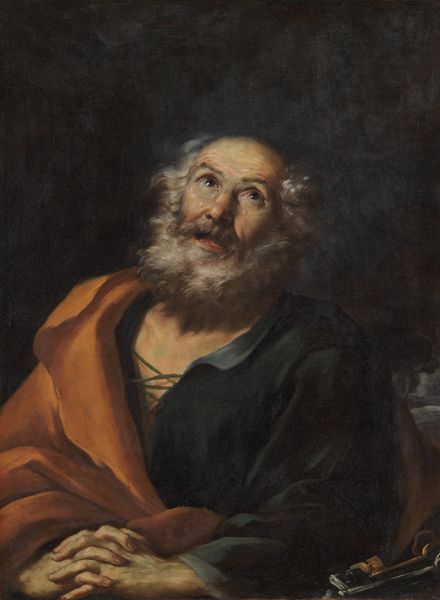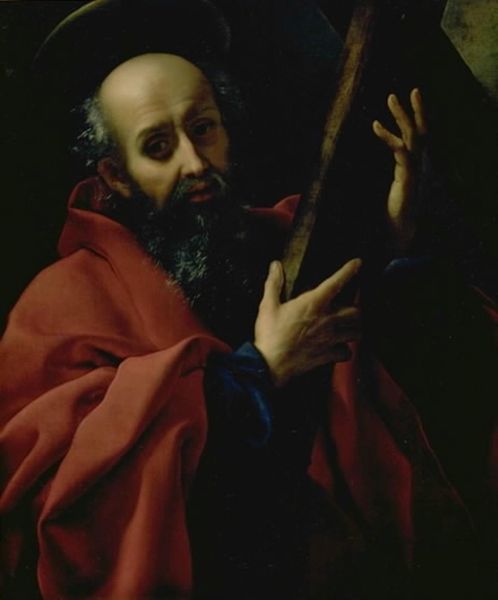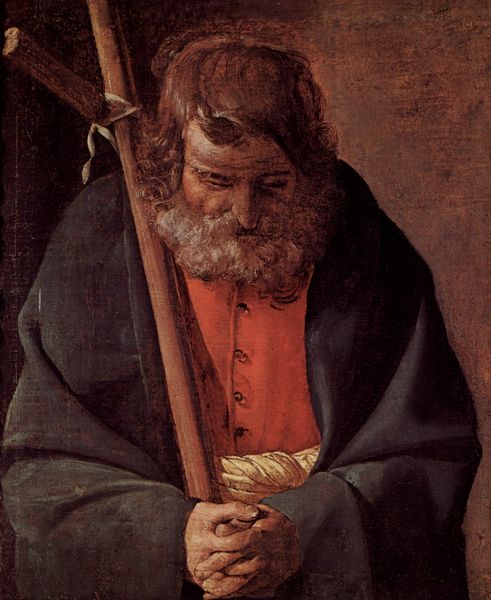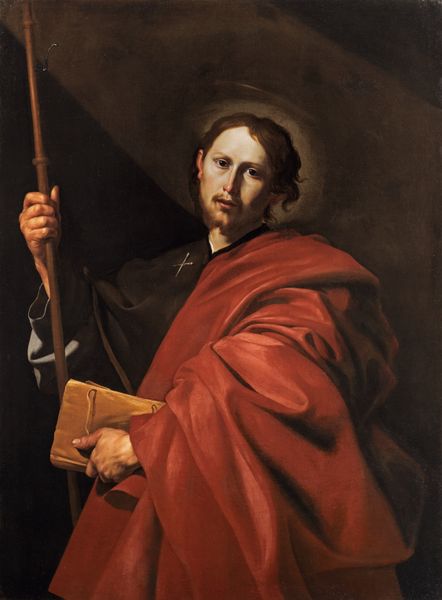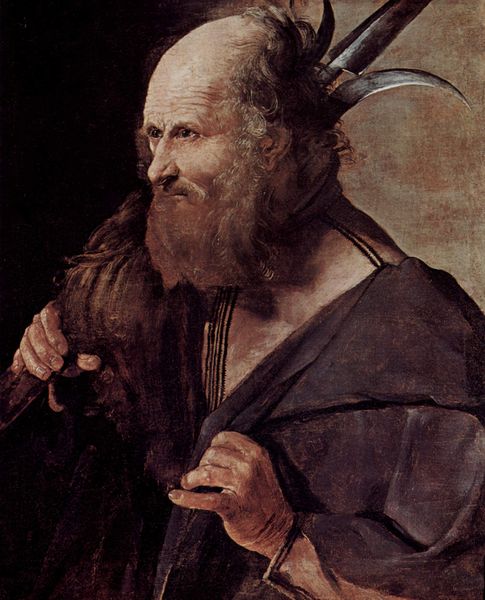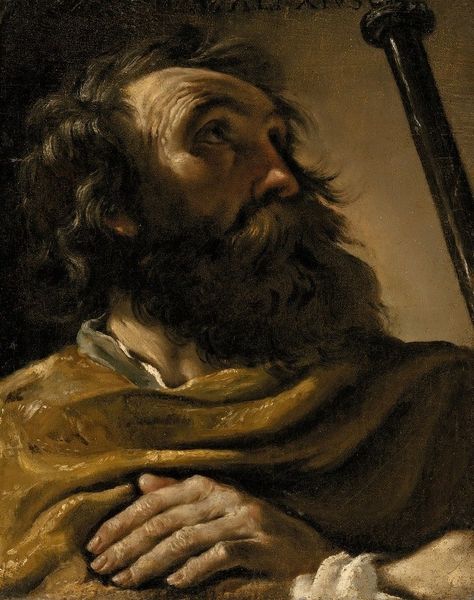
oil-paint
#
portrait
#
baroque
#
portrait
#
oil-paint
#
figuration
#
history-painting
Dimensions: 76 x 61 cm
Copyright: Public domain
Curator: Here we have Guido Reni's "Saint Paul," painted in 1634, now residing in the Museo del Prado. Editor: It's intense. The upward gaze and that blood-red cloak, juxtaposed with the pallid face... the whole piece exudes a feeling of burdened revelation. Curator: Precisely. The upward gaze is crucial; it signifies Paul's spiritual connection and unwavering faith. And let's not forget the sword, Paul’s attribute which represents his martyrdom but also, metaphorically, the word of God which pierces through falsehoods. Editor: I'm also struck by the tangible quality of that red pigment. It's thick, almost velvety, hinting at the cost and source of these materials. Who would've ground those pigments? How did the workshop function? These material aspects offer their own narrative layer beyond just religious iconography. Curator: Good point. The selection and treatment of materials would certainly reflect the patron's status and intentions. Reni was highly sought after and meticulous; that striking red would be no accident. It reinforces the passion and sacrifice inherent in Paul's story, doesn’t it? The red invokes bloodshed. Editor: Absolutely, the artist consciously uses these materials to elicit certain responses. It makes me think about the socioeconomic structure needed to make something like this: patronage, pigment sourcing, labor… a whole production line feeding into a single painted surface. I always find the evidence of that labor the most compelling aspect. Curator: And by depicting Saint Paul, Reni invokes centuries of theological tradition, a visual lineage recognizable to contemporary viewers. The image functions as both devotional object and a cultural touchstone. Editor: It shows the fascinating tension between the spiritual goals and very material conditions needed to get there. Both have legacies that shape contemporary cultural objects. Curator: Exactly. Hopefully looking at this, viewers reflect not just on what is represented but consider how those elements convey their intended meaning, for better or for worse. Editor: I leave this looking and considering all of those hands, that material cost. It creates a conversation across history.
Comments
No comments
Be the first to comment and join the conversation on the ultimate creative platform.
